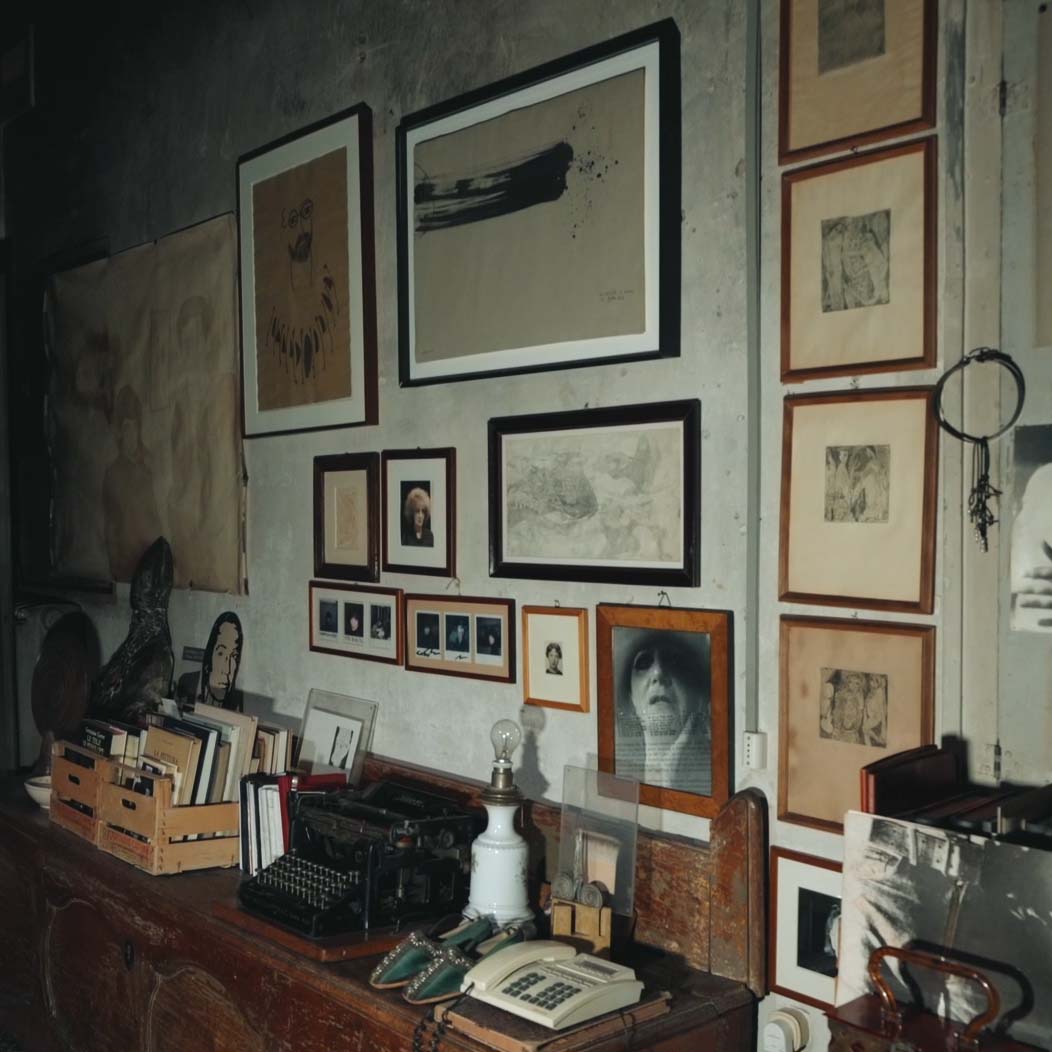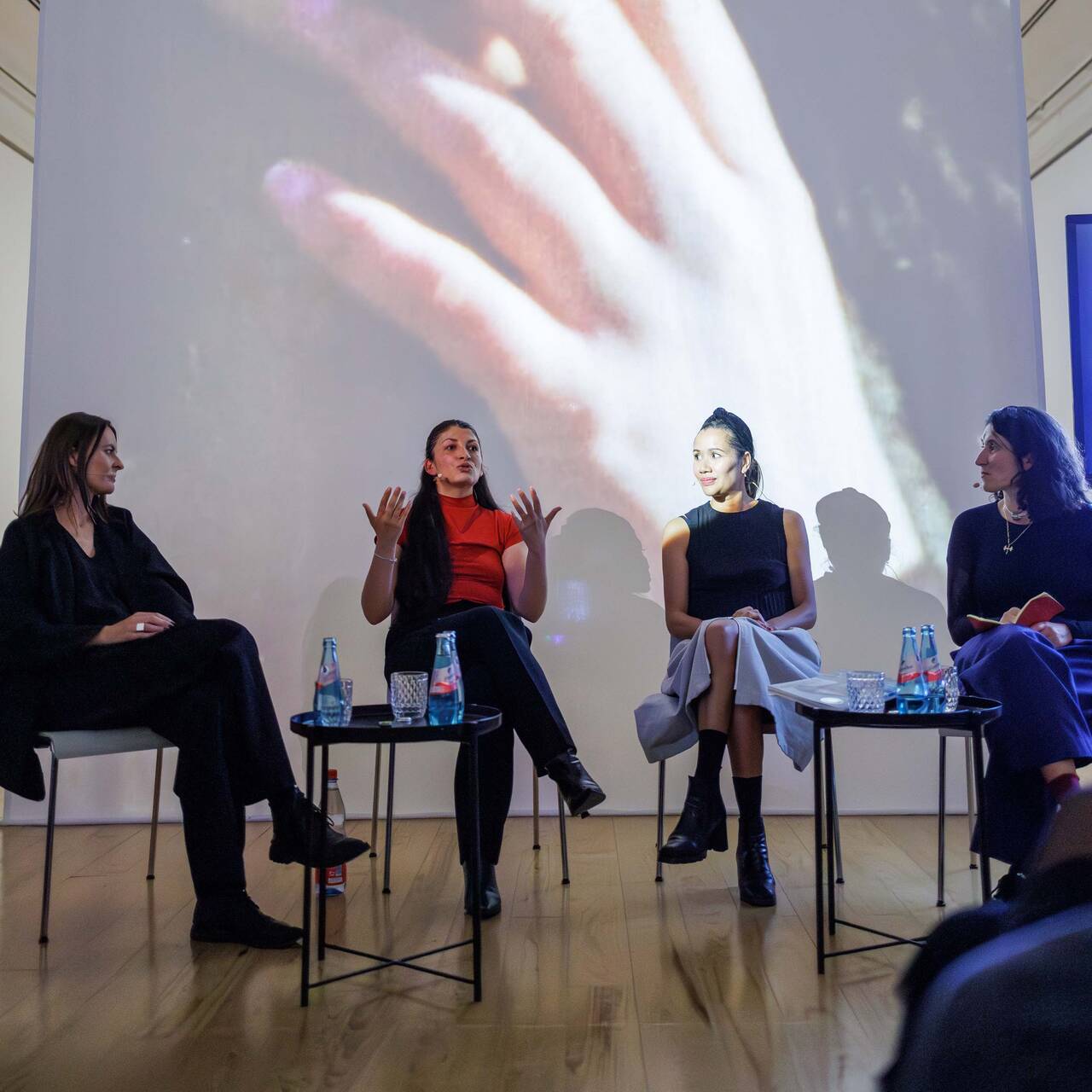She is not only an artist, but also an activist. Lin-May Saeed constructs hybrid creatures with her sculptures, addressing the rights of animals and their relationship to humans. A studio visit.
Lin May Saeed meets me in her Berlin studio. Outside it is already fall, so we make ourselves comfortable with a cup of hot grain coffee with cardamom and some coconut chocolate. Suddenly I hear scrabbling under the big table we are sitting at: Dozing beneath it are two young rabbits, both of which Lin May Saeed has adopted. The mother was rescued while still pregnant from a rabbit-breeding farm in the country that was closing down.
Now they spend some of the time here in the studio and some in the countryside with plenty of space to run around in the grass. Animals’ right to live is the major theme of Lin May Saeed’s day-to-day life and her art.
With figurative sculptures she addresses the right of animals to live
It was at the Kunstakademie Düsseldorf (Academy of Art) that she discovered sculpture, and for her first sculptural work she modeled an animal head. “Towards the end of the 1990s, fur was becoming popular in fashion again. It was quite noticeable in a fashion city like Düsseldorf,” explains Lin May. She began distributing flyers and got to know other activists. At animal protection conferences she saw secretly filmed footage from animal testing laboratories and heard a lecture by American animal rights philosopher Tom Regan, who presented a fundamental work for the movement with “The Case for Animal Rights,” published in 1987. The rights of animals and their relationship to humans became the subject of her figurative sculptural work, her sculptures of animals generally arranged in groups, her paper cut-outs and her works in steel.


In her studio I see preliminary studies for a work produced in white bronze for Cologne’s sculpture park and for a group of sculptures that were exhibited at the London art space Studio Voltaire this summer. They are mainly formally and provisionally arranged creatures that are in some cases hybrids and not clearly identifiable at first glance, into which the artist allows her research to flow.
What was missing, was the female perspective
“Right” is indeed an abstract term, says Lin May Saeed, and is not so easy to transfer to figurative art. When the animal rights movement renamed itself the “animal liberation movement,” she immediately had images come to mind, she says. These also entered into the series of steel works, she explains, two of which are now on display in the SCHIRN exhibition WILDERNESS. Lin May Saeed produced them herself in her studio with a welding system. She was inspired by photographic documentation of animal liberations that she found in magazines.





These generally showed male liberators with a dog in their arms, she says. What was missing, she felt, was the female perspective, in spite of the fact that there are an awful lot of women in the animal rights movement.
Also lacking was the perspective of farm animals such as pigs, she says. “Every animal, even a breeding sow who shares her fate with millions of others, has its own biography.” Lin May Saeed transferred both of these criticisms into the subject of “The Liberation of Animals from their Cages XVII/Woman with Pig” (2015), in which a hooded woman runs with a pig in her arms through a door, with the tool used for the liberation – a bolt cutter – also visible. The second motif, “The Liberation of Animals from their Cages XVIII/Olifant Gate” (2016), shows the liberation of an Indian elephant.
Every animal, even a breeding sow who shares her fate with millions of others, has its own biography.

Lin May Saeed regularly reads magazines from the animal liberation movement, as well as publications on animal philosophy and human-animal studies, which was recently established as an academic field in its own right. An old wooden cupboard filled with books, folders and paint tubes gleaming from behind glass doors stands next to the table in her studio. Lin May Saeed pulls out a few books and magazines. We talk about some of the movement’s foundational texts, such as “Animal Liberation” by Peter Singer, with which he triggered the modern animal rights movement in 1975. More recent texts examine such topics as “speciesism,” i.e. the oppression of animals similar to forms of discrimination such as racism or sexism – a concept that has now been discussed more frequently in the creative sphere.

On the glass doors of the bookshelves and on the walls hang any number of salvaged photographs and drawings of a kind of wild dog, which I have been looking at for a while. What on earth is it? “Spotted hyenas!” calls Lin May Saeed. “An unbelievably interesting animal. It’s the only large predator that lives in a matriarchy, and at the same time it is one of the most aggressive hunters in the animal kingdom. The lowest-ranking female is still superior to the highest-ranking male. Biologists cannot even distinguish between the males and females anatomically; they have to use blood samples.” The exhibition at Studio Voltaire also included a sculpture of such a spotted hyena.
Not only an artis, but also an activist
A glance at the spotted hyenas and, of course, the fact that Lin May Saeed studied in Düsseldorf mean I cannot help but think of Joseph Beuys. In 1974 he carried out his famous ac-tion “I like America and America Likes Me,” having himself shut in a gallery for several days with not a spotted hyena, but a coyote.

So was he an influence? “I actually studied Beuys a great deal during my degree,” she says. “We had a lot of video footage in the library, and I watched all of it. What I really liked about Beuys, which has been lost in the way he is perceived today, is the humor in his work.” Nevertheless, she finds it hard to come to terms with the use of live or dead animals, for example in Beuys’ “How to Explain Pictures to a Dead Hare.” There has as yet been no discussion about that here, she says, although it is a topic in the USA. Lin May Saeed is, after all, not just an artist, but also an activist.
What I really liked about Beuys, which has been lost in the way he is perceived today, is the humor in his work.”









